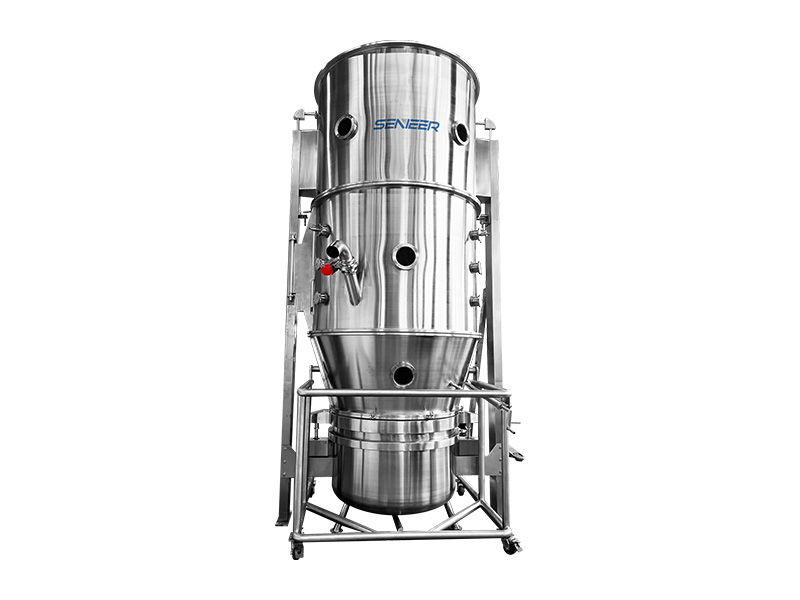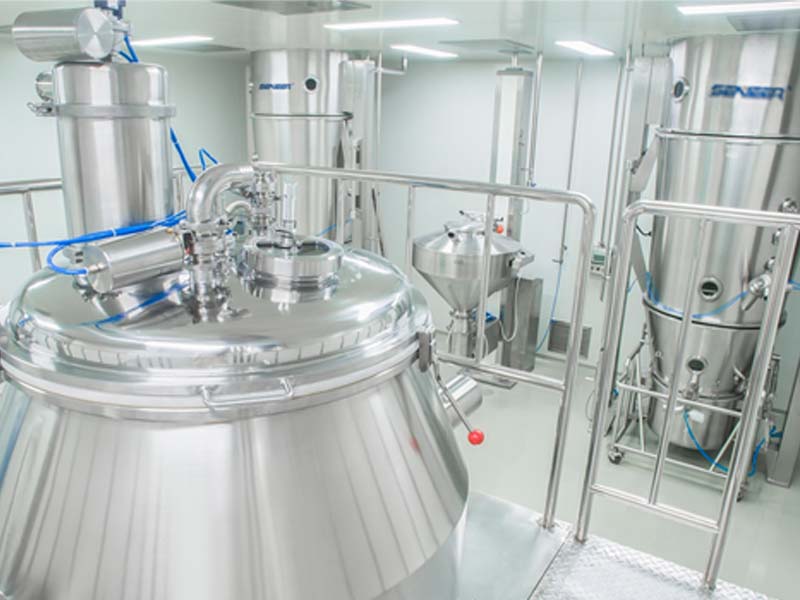Key Points Of This Chapter
- The selection of the process is based on the characteristics of the API and the properties of the excipients, which must be comprehensively considered through reasonable evaluation methods. When there are many influencing factors, in order to find CQAs more quickly and effectively, it is necessary to conduct DoE design to find the design space.
- The process of process development is a continuous QbD process. Each stage has different research goals. Therefore, it is necessary to design screening parameters according to the research goals of different stages, and then optimize the process to find the real design space.
- This chapter summarizes the influencing factors of fluidized bed top injection granulation and the key points of risk assessment.
- This chapter demonstrates the feasibility and convenience of DoE practical operation through the lactose/starch model.
Process Development
01 Process Selection
Process optimization begins with the successful development of a stable process. Design of experiments (DoE) does provide a tool for achieving this goal. Use DoE to identify key process variables, understand the factors affecting the experiment, and define the limiting factors when scaling up the process. The most important process variables discovered during the DoE may still be applicable to pilot scale and eventually to production batches.
During pre-formulation studies, when all ingredients of the formula are well compatible and the potency of the active ingredients remains unchanged, process development begins.

Once the formulation is deemed acceptable, process selection will need to consider the critical quality attributes (CQAs) of the dosage form. The choice of fluidized bed granulation or high shear wet granulation will depend on the physicochemical properties of the ingredient composition and the amount of each ingredient and its solubility, particle size, density, flow properties, stability, etc. Consistency of raw material physical and chemical specifications is critical to the optimization of the granulation process. Changes in the physical properties of the powder being granulated can cause processing problems.
It is very important to study and understand the interactions between active and inactive ingredients. In order for a product to be stable, the function of each ingredient in the matrix should be understood and controlled, and the range of variations that can be tolerated. During the development phase, technology availability will also have an impact on process selection. It is known that particles from high-shear mixers will be denser and have low porosity, while particles prepared using a fluidized bed will be more porous with good flow and compression properties.
Fluidized bed granulation processes generally last longer than high shear wet granulation and fluidized bed drying processes. The fluidized bed process requires accurate and reliable control of all process parameters. Important parameters that must be controlled in wet granulation are product temperature, atomizing air pressure, air dew point or humidity, and injection rate of the binder solution. The physical properties of fluidized bed granulation are strongly affected by the binder and its concentration. Increasing the content of binder in the formula will increase the adhesion of the binder and form particles with low brittleness and larger average particle size.
02 Quality Comes From Design
Quality by Design (QbD) is a concept encompassing the following principles:
•Identify and explain all key sources of variability.
•Understand and appropriately manage variability in the production process.
•Product quality attributes can be accurately and reliably predicted within the design space.
•Key design principles encompass these three actions – assess, plan and implement.
Using QbD principles during product development provides opportunities to promote innovation and continuous improvement throughout the product life cycle. Dosage forms created using QbD principles should be robust or reproducible and be able to tolerate, accept, understand and control variation. Formal experimental design can be used to identify critical and interacting variables that may be important in constructing the design space and ensuring the quality of the drug product. The ICH Q8 guideline (2005) states that unexpected results from drug development studies can be used to construct the design space.
03 Fluidized Bed Process
Factors affecting particle formation and growth in the fluidized bed process include:
(1) Temperature and volume of fluidizing air
(2) The height of the spray gun relative to the fluidized material
(3) Binder addition rate
(4) Degree of atomization and dispersion of adhesive
Establish Key Process Parameters
Fluidized bed processes have multiple variables that influence each other. Determining key process parameters is critical. Understanding the effects of these parameters, including their interactions, is critical to controlling them. Process optimization depends on the optimal set of critical and controllable variables to produce a product with desired attributes. Changes in process parameters as well as changes in CQA may cause changes in the final product. In order to understand the impact of process parameters, a “design space” is required in which the variability of the process parameters can be demonstrated.
In fluidized bed granulation, understanding the desired particle properties or CQA of the particles is a good starting point in determining which process parameters will affect these properties. By using Ishikawa diagrams, key process parameters that influence the desired granule properties, such as moisture content, particle size distribution, and flowability, can be identified and risk analysis of fluidized bed granulation can be performed. A typical Ishikawa diagram can be prepared for a fluidized bed granulation process. Similar Ishikawa diagrams can be used for other fluidized bed operations, such as drying or coating, and throughout the solid dosage manufacturing process steps to identify critical parameters that need to be identified and controlled. , to generate a Target Product Profile (TPP).
Once the key variables for a process have been established, in order to create a design space, a DoE can be performed to evaluate the impact of higher-level variables and gain a better understanding of the process. This also helps in developing appropriate control strategies. Risk assessment and formal experimental design can provide an understanding of the impact of process inputs on product CQA and can also help identify variables and their ranges that can achieve consistent quality.
04 Risk Assessment And Management
Criticality assessments related to drug product quality are typically determined as a function of risk. Descriptive criticality is a function of risk assessment based on understanding the relationship of process variables and material attributes to drug product quality attributes.
After selecting a process, it is wise to understand the risks of fluidized bed processes and anticipate potential difficulties with process control and/or susceptibility to various forms of contamination. Risk identification can be accomplished through knowledge space and matrix investigation of key process variables affecting CQAs.
Risk Reduction And Control
Risk reduction and mitigation can be achieved through QbD, which implements control strategies regardless of scale on the basis of holistic development. A control strategy should be designed to ensure that the proposed process can consistently produce a product of the required quality without failure on a larger scale. Elements of the control strategy should demonstrate how process control and control of input materials (drug substances and excipients), intermediates (process materials), drug product containers, and closure systems will affect final product quality. These controls should be based on an understanding of the product, formulation, and process and include, at a minimum, control of critical process parameters and material properties. Sources of variability that affect product quality should be identified, appropriately understood, and subsequently controlled.
In summary, the control strategy should include the following:

(1) Control input material attributes (such as raw materials, excipients, original packaging materials) based on the impact on processability or product quality;
(2) Product specifications;
(3) Control of unit operations that have an impact on downstream processing or product quality (e.g., the effect of drying on degradation, the effect of particle size distribution on dissolution);
(4) Replace final product testing with in-process or real-time release testing (e.g., measure and control CQA during processing);
(5) Monitoring procedures (e.g., regular complete product testing).
05 Process Control
The fluidized bed process requires the control of key factors affecting the process. They are:
(1) The fluidizing air controller and recorder work properly to ensure temperature and dew point control throughout the process.
(2) Minimize differences in active drugs or excipients (especially binders) due to differences between different suppliers or batches from the same supplier.
(3) In the case of granulation, the uniformity of the binder injection rate throughout the granulation stage.
(4) Good maintenance procedures for pump and nozzle assemblies and exhaust filter assemblies to avoid process interruptions.
(5) Establish a preventive maintenance plan for the entire system.
(6) Built-in process alarms and signals, such as filter bag rupture detection devices, can detect problems in the process in time.
(7) Improve the vigilance of operators and train process knowledge so that process problems can be discovered in a timely manner and corrective measures can be taken.
Process Analytical Technology (PAT) helps ensure final product quality by designing, analyzing and controlling manufacturing through timely measurements of critical quality and performance attributes of materials and processes. For fluidized bed processors, the instruments on the machine include inlet and exhaust temperature, product temperature, inlet air humidity (dew point), total air volume, product and filter pressure drop, air atomization pressure, injection rate and other measurements. To measure particle size growth online during the granulation process, process analysis tools such as focused beam reflectometry and spatial filtering techniques are used. Use Parsum-View software for data collection and analysis, and display particle size and distribution graphics in real time. Parsum probes are based on spatial filtering technology.
06 Summary
We now have tools available to improve understanding of the process and the quality of the finished product. PAT, risk analysis, system experiment DoE and design space will likely become important components of R&D. To be able to develop a robust process that can be optimized at production scale, CQA should be clearly defined. Once this is understood, formulation optimization must occur, including the design space of the formulation. The choice of process will depend on the CQA and the nature of the drug substance and excipients. Once the process is selected, key process parameters need to be determined, risk assessment and DoE performed to create the design space.
The variables that have the greatest impact on the final CQA must be controlled through online or offline tools. As a product moves from development to pilot testing to commercial production, the process needs to be maintained in a constant state of control. Therefore, the robustness of the process begins during the research and development phase. The design space is dynamic, starting in the initial stages and evolving throughout the life of the process. Increased development resources may be required to achieve knowledge-based process understanding. The case studies presented demonstrate how the management and evaluation of DoE can be carried out.










